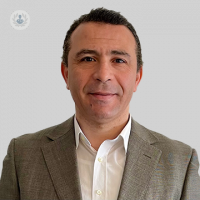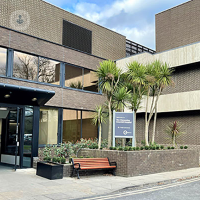Carotid endarterectomy
Ms Sophie Renton - Vascular surgery
Created on: 10-20-2015
Updated on: 07-19-2023
Edited by: Conor Lynch
What is carotid endarterectomy?
The carotid arteries (also known as carotids) are the main arteries in the human body. They are located at both sides of the neck and their role is to supply the brain with oxygenated blood from the heart.
Sometimes, the carotid arteries by atherosclerosis. That is where there is a build-up of plaques within the blood vessels. The plaques (made of accumulated fat, cholesterol and calcium) can obstruct the arteries, becoming a potential risk factor for thrombosis, embolism, or stroke.
Carotid endarterectomy (CEA) is a surgical procedure used to remove the obstructions within the carotid arteries.

What is it for?
You may have to do a carotid endarterectomy in case of:
- mild to moderate (60 per cent) blockage in the carotids
- a 50 per cent narrowing of the carotids (stenosis) and a history of stroke
What does it involve?
The procedure lasts roughly two hours. You will be either under general or local anaesthetic.
The surgeon will make an incision nearby the obstructed area, temporarily interrupting the blood flow to the carotid to be able to work better. The obstructing plaque will be removed with another cut, then incisions will be sealed with a patch. Finally, the surgeon will restore the blood flow to the carotid.
How can I prepare for a carotid endarterectomy?
Before the surgery, you will have some routine tests to determine where the narrowing or obstruction is. Here are the most common screening tests:
- Carotid ultrasound: a transducer transmitting ultrasound waves will show an image of your carotids
- Carotid angiography: a contrast medium is injected into the carotids, making them visible to X-rays
- Magnetic resonance angiography : much like in a carotid angiography, contrast medium is used to do an MRI scan of the carotids;
- CT angiography : similar to the two previous tests, a CT angiography is a CT scan done with contrast medium.
What is recovery time like?
After the procedure, it is normal to feel some neck pain at the carotids level, as well as trouble ingesting hard foods for a couple of days. You are likely to stay for two days after the surgery.
Usually you will be able to return to work within about three weeks. If the suture stitches are not absorbable, your doctor will tell you when to schedule an appointment to remove them.
What are the alternatives to a carotid endarterectomy?
If the obstruction in a poorly accessible area, or if you are not in a fit enough state for surgery, undergoing a carotid endarterectomy may not be the best option for you. Another option is having a carotid angioplasty.











